1.2. Where does the energy come from on Earth?#
Key Concepts:
Energy is received unevenly by Earth and redistributed via the movement of air and water.
The uneven heating drives evaporation, condensation, and pressure differences in the atmosphere and at the atmosphere-ocean interface. These pressure difference lead to turbulent movement and eddies which are the workhorses of heat transport over the surface of the planet.
In this lecture we are going to consider where the energy comes from on the planet. The energy ultimately comes from the sun, which delivers \(341.5 \ \mathrm{W m^{-2}}\) to the Earth. The way that our planet receives this energy, redistributes this energy, and the chemical, physical and biological reactions that harness or result from this energy drives all environmental and climate systems. Therefore, this is where it all begins. You will revisit these concepts later in the course, when we study the Global Environment in Lent term. When we work on these concepts then, we’ll delve more into the mathematics behind them. Here we will cover the broad topics more as an overview of the planetary system.
Earth doesn’t get all the power that the sun sends our way.
Some is absorbed by gas in the atmosphere.
Some bounces off clouds and returns to space through Rayleigh Scattering.
Some is absorbed by clouds.
Some bounces off the surface of the planet (particularly bright surfaces like snow).
About 46% is absorbed by the surface.
Our planet also re-radiates energy but this energy is at a longer wavelength than what we receive from the sun (Fig. 1.1).
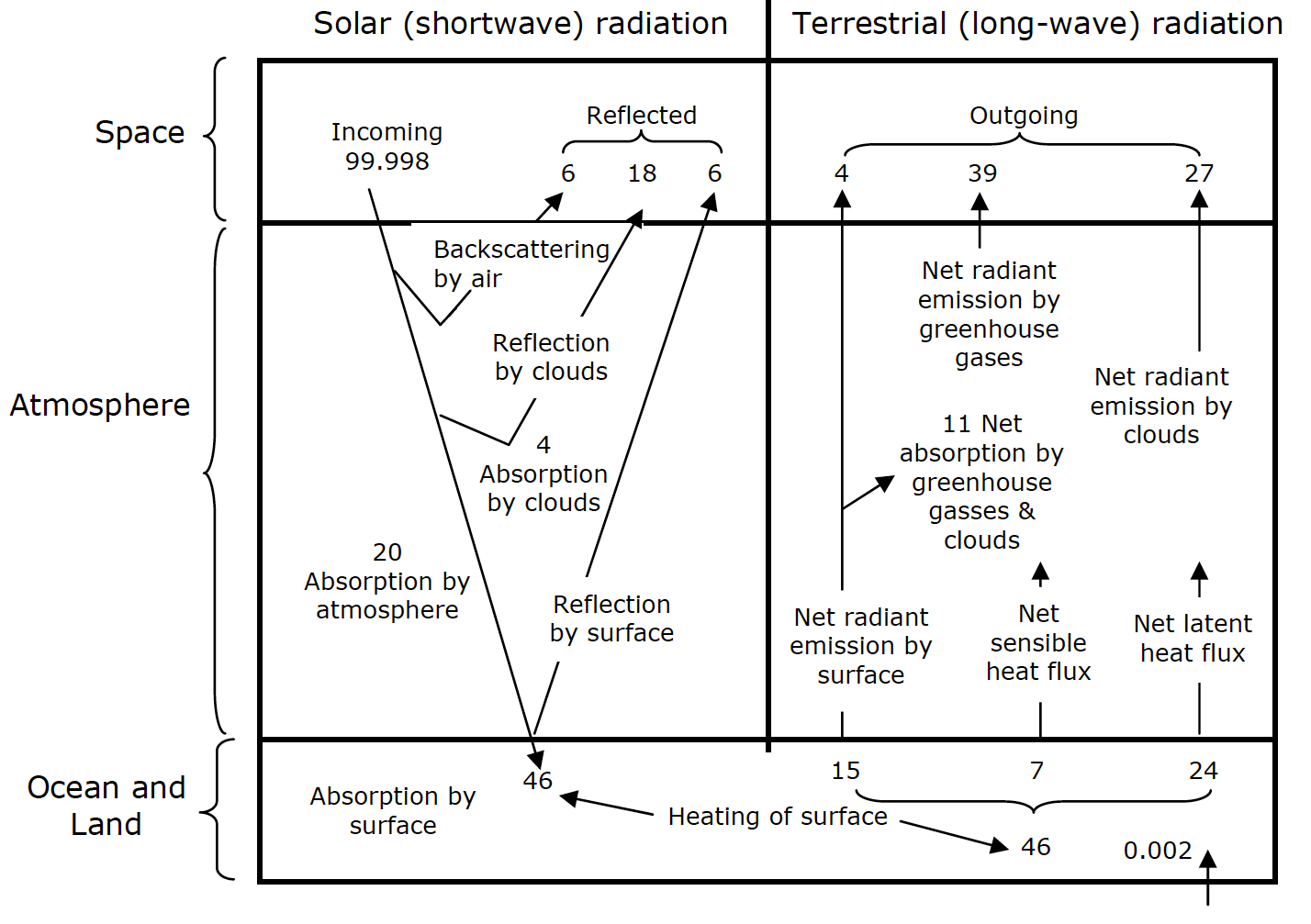
Fig. 1.1 A schematic of the earth’s energy cycle. Incoming solar radition is absorbed and reflected (left). The earth itself also emits longer wave radiation in the infra-red band (right).#
What are each of these things happening on Earth’s surface? The heating of Earth’s surface drives physical changes which allows heat (in the form of radiation) to be released into the atmosphere.
For example, when water changes state from liquid to vapour during evaporation, this is called the latent heat flux, while when there is a temperature change at the surface but no change in state, this energy is released to the atmosphere as the sensible heat flux. You will have learned about latent heat and sensible heat in GCSE Physics.
Different gases in our atmosphere are good at absorbing radiation or releasing radiation of different wavelengths. Fig. 1.2 shows the wavelengths of the downward transmission of solar radiation and the upgoing longwave radiation. Gases in our atmosphere both absorb wavelengths of radiation that are short (as in those coming from the sun) and long (as those emitted from the Earth). Different gases behave differently, and later this term you will learn what in the physics of the molecule makes a good greenhouse gas.

Fig. 1.2 The raditation transmitted and absorbed by the atmosphere.#
The balance of energy coming in from the sun and then interacting with the surface of the planet, causing both changes of state and changes in local temperature, and the transmission of this energy through the atmosphere, this drives the hydrological cycle, the movement of heat, air, water, and the carbon in that air and water. What the Earth does with the energy it receives, and the impact that this has on the climate system, is the focus of this course.
The sun doesn’t heat the Earth’s surface evenly, but the re-radiation of energy from Earth’ surface is more even. This leads to global energy imbalance that drives the transfer of water and air (Fig. 1.3).
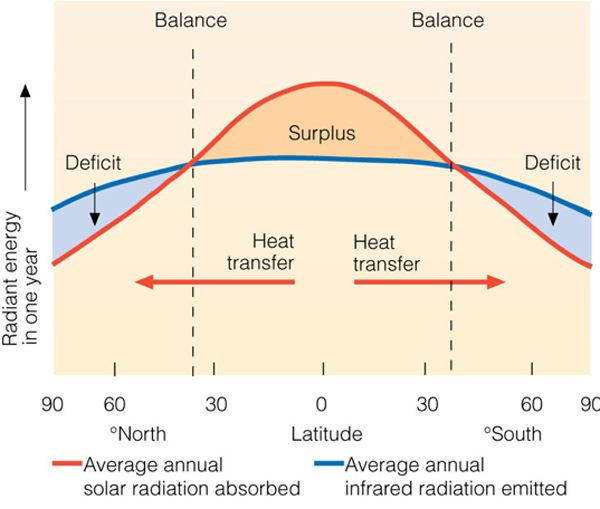
Fig. 1.3 The balance of incoming and outgoing radiation plotted against latitude. The surplus of radiation at the lower latitudes is transported north and south to higher latitudes.#
The heat is transferred when warm air rises and moves towards colder regions, and when warm water is moved in the oceans from the tropics (warm) to the poles (cold). We can quantify the energy transfer and parse it into which fraction is transported by the air and which is transported by the water (Fig. 1.4).
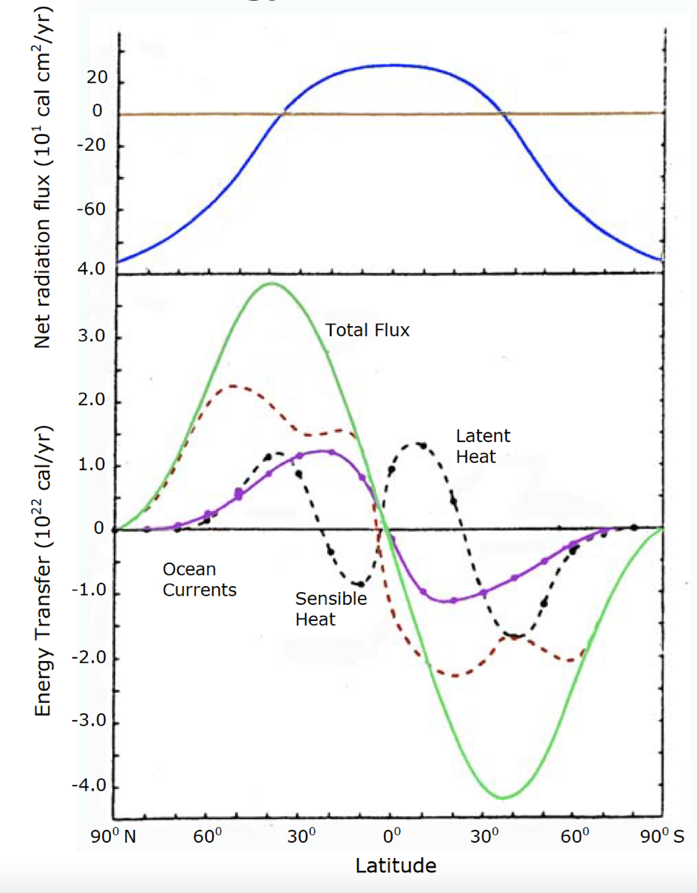
Fig. 1.4 How is energy redistributed from the equator to the poles? It is carried by both the atmosphere and the oceans. This energy redistribution results from temperature gradients and drives the hydrological (or water) cycle. Therefore, it is key for all environmental systems.#
We know instinctively that heat is redistributed because we, in Cambridge, have much warmer temperatures than we would have if heat wasn’t transported from the equator to the poles. In Fig. 1.5, you can see the equilibrium temperature as a function of latitude with the latitude of Cambridge noted on the diagram. As you can see, Cambridge is much warmer (over 20 DegC warmer!) than it would be if there were no heat transport over the planet.
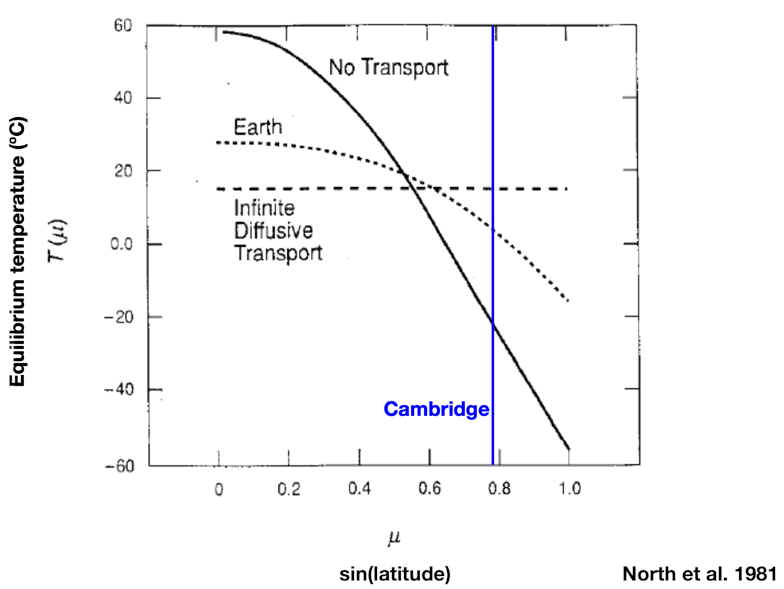
Fig. 1.5 Camrbidge is warmer than it should be.#
How is this heat actually transported? It is transported in part because of movement in the oceans and in part because of movement in the atmosphere. There are large scale circulation patterns that are established in the ocean and atmosphere, due to the creation of pressure differences due to differential heating leading to evaporation and condensation. This movement of heat and water vapour on the rotating planet sets up circulation cells in the atmosphere and circulation patterns in the oceans (Fig. 1.6). In our lectures on the Global Environment we’ll discuss these broad patterns of movement.
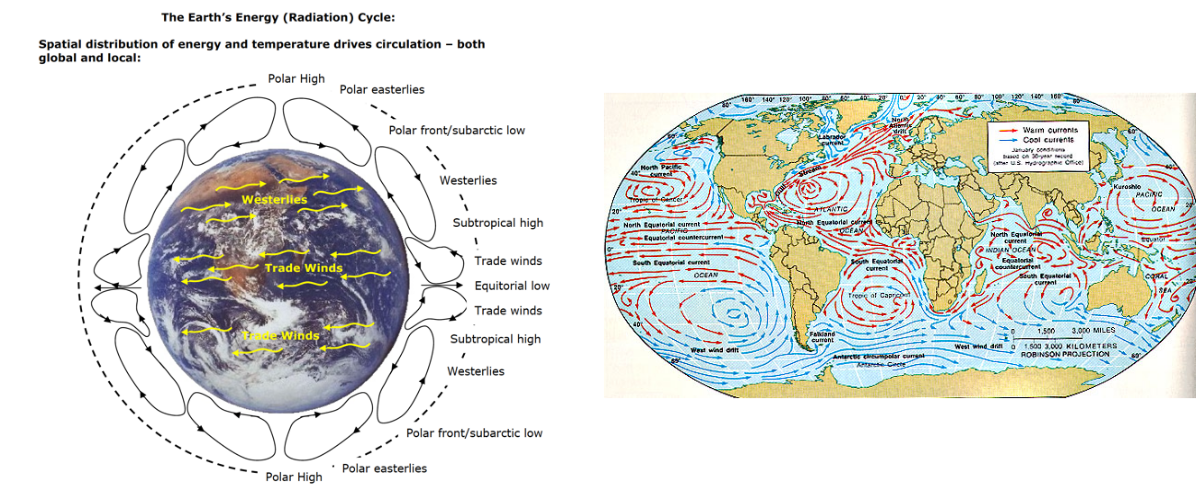
Fig. 1.6 Movement in the atmosphere (left) and oceans (right).#
You have likely heard that Cambridge is warm because of the transfer of heat by the Gulf Stream, the deep western boundary current that brings warm water from the Caribbean to the North Atlantic. In the ocean, large-scale mean currents, including western boundary currents, are largely responsible for transporting heat from the tropics towards the poles. However, in the atmosphere, the physical workhorse for the movement of heat around the planet are eddies (including the storm systems that control our weather). Eddies, which occur in both the ocean and atmosphere, are circular motions of air and water (Fig. 1.7). Eddies more broadly occur during turbulent flow and refer generally to the movement of fluid in a direction counter to that of the general flow. We’ll discuss more about the turbulent flow in Lecture 5.
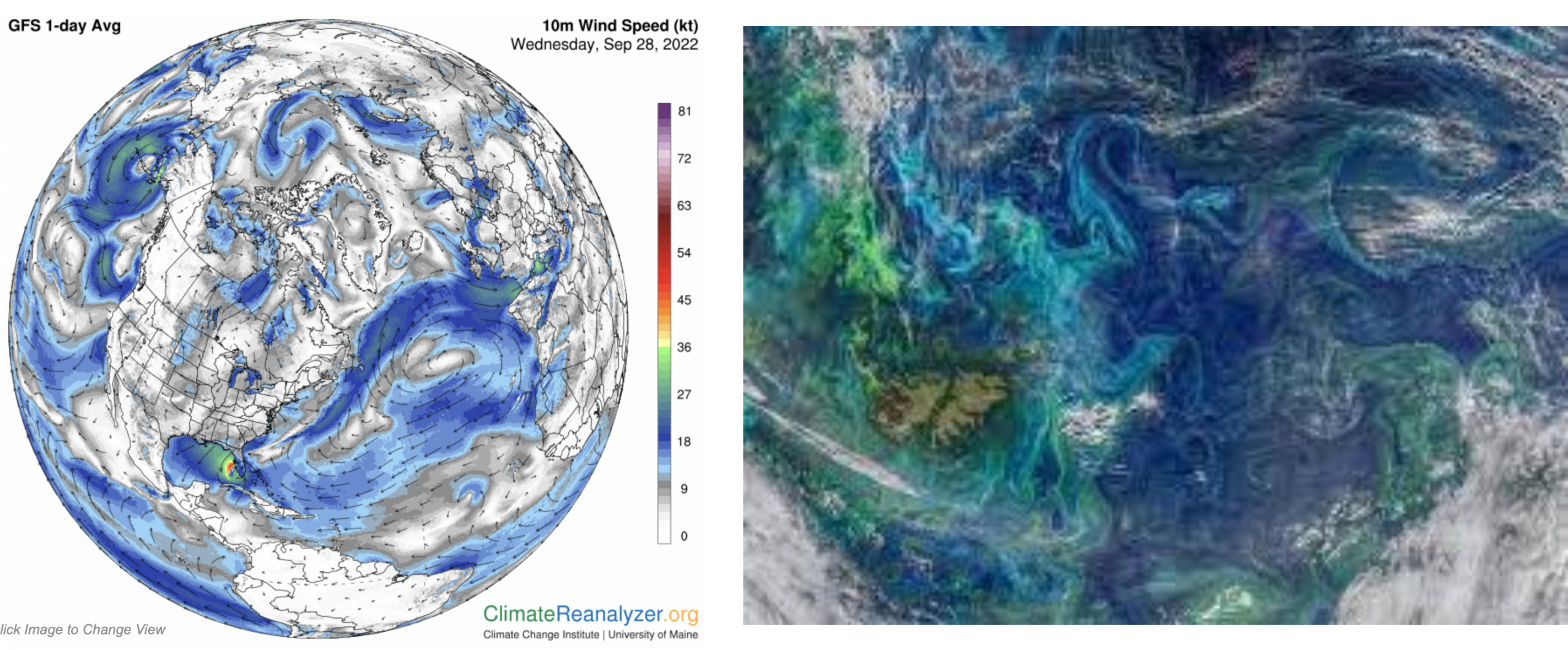
Fig. 1.7 Eddies in the atmosphere (storms, left) and the ocean (right).#
Where will you see this elsewhere in the course? We will revisit these topics again in Lent term in the first 9 lectures on the physics of the global environment (Lectures 26-33), and we will consider the physical and chemical structure of the atmosphere in Lecture 19 later this term.
